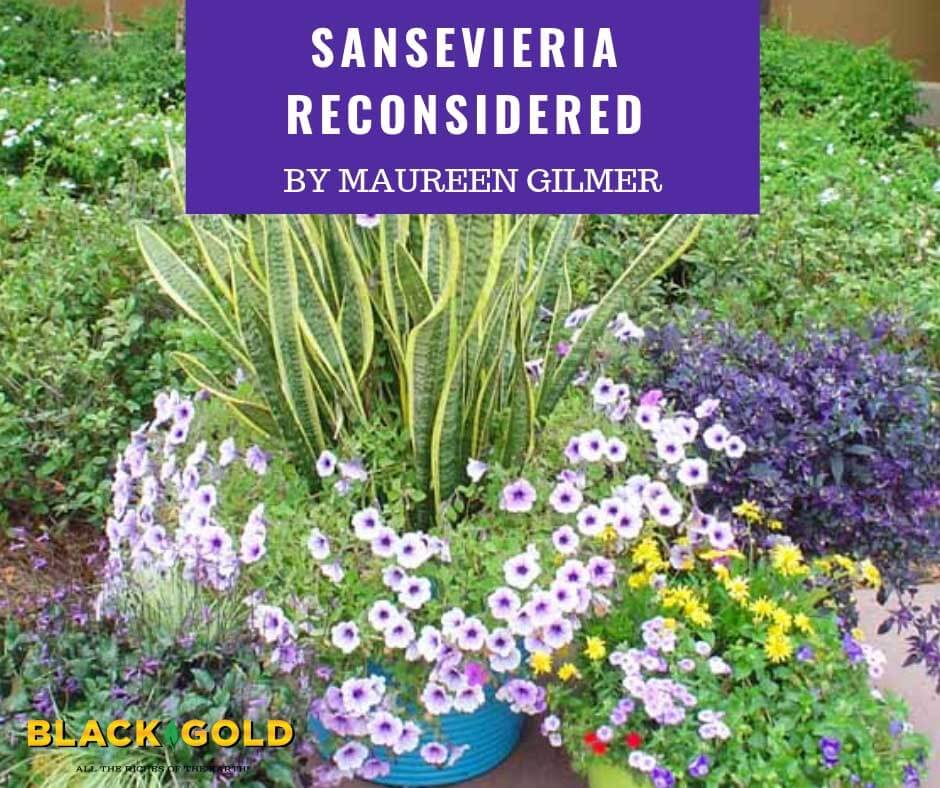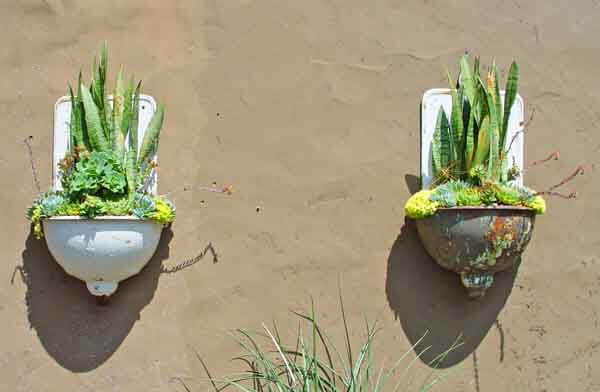
Extreme South African drought consumed everything except curious green, sword-like plants rising from the barren ground beneath giraffe-pruned trees. They survived because they are succulents. While browsers struggled to find food, they did not touch the swords, which contained unpalatable toxins.
This is Sansevieria trifasciata, the old fashioned mother-in-law’s-tongue or sword plant. Its resilience shows why it is a no-brainer house plant; it’s tough as well as attractive. Take it outdoors for the summer, and it’s a game changer on porch or patio.
New Popularity

The rediscovery of this Victorian drawing room house plant by lovers of the mid-century modern aesthetic has brought Sanseveria into the limelight again. Sansevieria trifasciata and its close kin are usually sold in the house plant department because they are cold-tender succulent house plants, until now. Where patios are quite shady, this is one drought resistant house plant that you can bring outdoors every summer.
Drought is also demanding new plants and varieties that don’t need much water. Sanseverias are not fond of hot western sun, so they prefer sheltered living spaces outdoors. Where lack of light precludes many less resilient species, these are real problem solvers.
Potting Sanseverias

Sanseverias are slow spreaders, much like Iris with their thick fleshy rhizomes that grow into colonies. Green shoots are produced along the roots. These roots are so strong they can crack a pot if too crowded, which is why they are best grown in 1-gallon nursery pots that can be cut away with pruners when it’s time to divide them. When pot bound, simply remove the root ball, separate it into manageable sections, let the root ends dry out for a few days, then replant in Black Gold Cactus Mix. As succulents, they appreciate a porous soil mix.
For a fresh idea, put your nursery sword plant in its plastic pot into a bigger pot of Black Gold All Purpose Potting Soil, so its rim sits an inch above the soil surface. Then plant around it with other seasonal plants or succulents that grow under the same light exposure. This will give your sword plant a more well-drained root zone than its companions in the same pot. If just planting companion succulents, use only Black Gold Cactus Mix to maximize drainage.
Foliage Variations

Sansevieria varieties are all similar in form, but they have different leaf patterns. This allows you to brighten or darken a setting, depending on the color value of a certain variety. Unfortunately, varieties aren’t always properly labeled, so be sure to select by eye to ensure you get what you need for the space you have in mind. With forms just inches tall to 4 feet in height, size should also be considered when purchasing. Since these were grown in greenhouses, give them some time to adapt to the location at your house before repotting or dividing.
 A plant this neutral is a chameleon, altering its overall feel and character depending on the setting. When grown as a house plant, there is no better vertical plant to play off a white wall. Add greenery to a hot zone in the house or apartment, knowing that if you forget to water, it’ll be just fine. If Sanseveria can survive an epic African drought, even the busiest mom can enjoy this oxygen-producing house plant. And, the most harried career woman will come home to a little bit of nature every day.
A plant this neutral is a chameleon, altering its overall feel and character depending on the setting. When grown as a house plant, there is no better vertical plant to play off a white wall. Add greenery to a hot zone in the house or apartment, knowing that if you forget to water, it’ll be just fine. If Sanseveria can survive an epic African drought, even the busiest mom can enjoy this oxygen-producing house plant. And, the most harried career woman will come home to a little bit of nature every day.
No matter where you live, bring sword plants out for summer, to try a whole new way to garden with them, knowing they’ll come back inside with you at frost to wait out the cold winter days.
